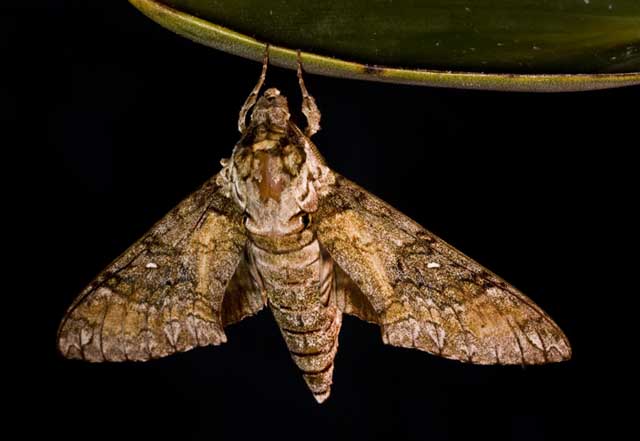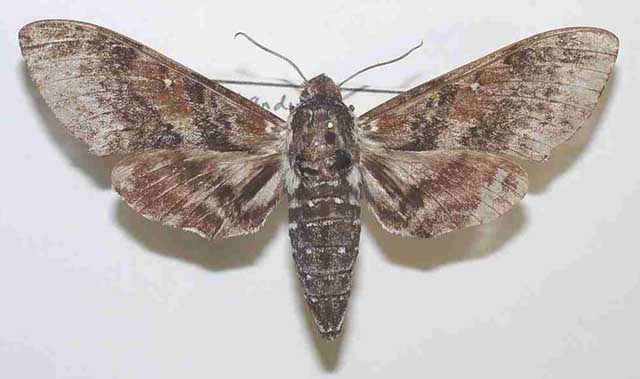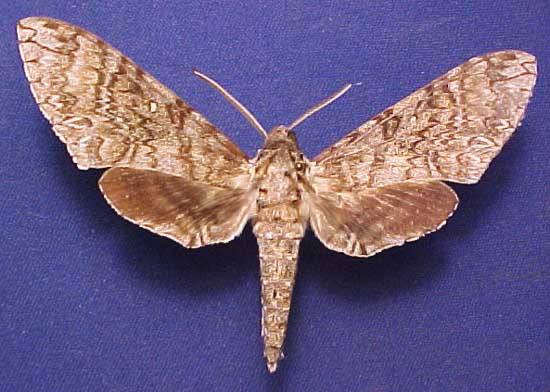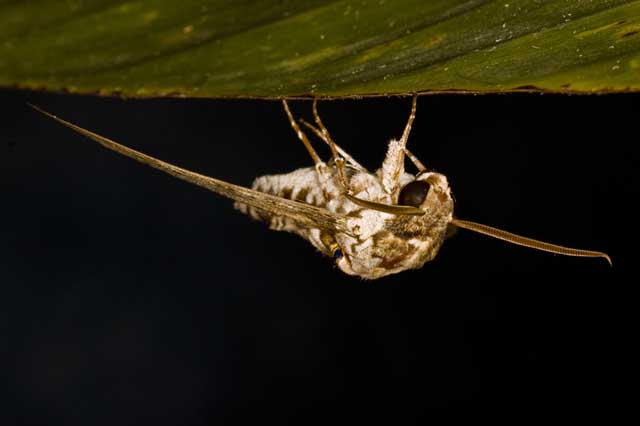Manduca brontes brontes
Manduca brontes brontes
(Drury, 1773) Sphinx

Manduca brontes brontes, Ocho Rios, Jamaica, courtesy of Theo Douma,
id confirmed by Jean Haxaire, Ian J. Kitching and James A. Tuttle.
This site has been created by
Bill Oehlke at oehlkew@islandtelecom.com
Comments, suggestions and/or additional information are welcomed by Bill.
TAXONOMY:
Family: Sphingidae, Latreille, 1802
Subfamily: Sphinginae, Latreille, [1802]
Tribe: Sphingini, Latreille, 1802
Genus: Manduca Hubner, [1807] ...........
Species: brontes brontes (Drury, 1773)
|
MIDI MUSIC
.....It's a Wonderful World.....
copyright C. Odenkirk
ON.OFF
<bgsound src="world.mid" LOOP=FOREVER>
|
DISTRIBUTION:
Manduca brontes brontes
flies in Jamiaca (specimen type locality) and Cuba (as subspecies cubensis) and generally in
the Greater Antilles and northern South America,
with occasional strays into Florida and up to South Carolina, with such strays generally regarded as subspecies cubensis.
The specimen below is from Greenville County, South Carolina,
Furman University Zoological Collections.

Kitching and Cadiou (2000) now recognize
Manduca brontes cubensis as a distinct subspecies of Manduca brontes.

Manduca brontes cubensis by John Vriesi.
FLIGHT TIMES:
Manduca brontes brontes adults fly from April to June in Florida.
James A Tuttle indicates those specimens occasionally observed in Florida are generally regarded as subspecies
cubensis, rather than the nominate subspecies.

Manduca brontes brontes, Ocho Rios, Jamaica, courtesy of Theo Douma,
id confirmed by Jean Haxaire, Ian J. Kitching and James A. Tuttle.
ECLOSION:
Pupae probably wiggle to surface from subterranean chambers just prior to eclosion.
SCENTING AND MATING:
Females call in the males with a pheromone released from a gland at the tip of the
abdomen. Adults take nectar from flowers.
EGGS, LARVAE, PUPAE:
Larvae feed on Tecoma, Fraxinus americana,
Fraxinus excelsior, Fraxinus platycarpa and Tecoma stans.
Return to Sphingidae Index
Return to Sphingini Tribe



